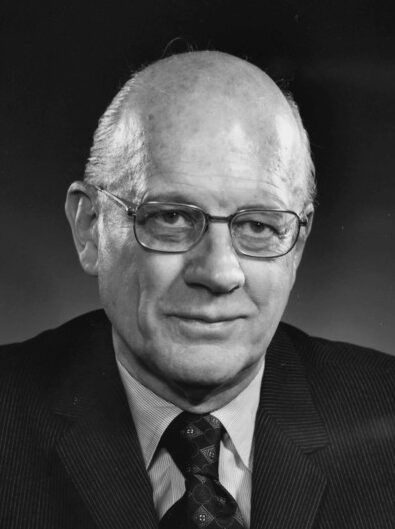IN MEMORIAM
Frederick Seitz

Read the entire memorial obituary, originally published by the New York Times and written by Dennis Hevesi (2008) here.
Frederick Seitz, a renowned physicist who held leadership positions at the National Academy of Sciences and Rockefeller University, passed away at the age of 96 in 2008. During his illustrious career, he made significant contributions to the field of condensed-matter physics, particularly in understanding the atomic properties of matter. Notably, he co-developed the Wigner-Seitz method for calculating the cohesive energy of metals.
Dr. Seitz’s achievements extended beyond physics; he played pivotal roles in national defense research during World War II, contributed to the development of the atomic bomb, and served as a science adviser to NATO. He received the National Medal of Science for his contributions to the quantum theory of solid-state matter.
However, in the 1990s, Dr. Seitz’s views on global warming garnered attention. He became a prominent skeptic of the scientific consensus on global warming, issuing statements and petitions challenging efforts to control industrial emissions. These contrarian views sparked controversy, with the National Academy of Sciences publicly opposing his stance. Despite his contributions to science, Dr. Seitz’s climate change skepticism remains a topic of debate and disagreement within the scientific community. He was a controversial man, but a brilliant physicist.
Seitz served as Trustee at Aspen Center for Physics from 1968 – 1972.

Positions Held
Trustee, 1968-1972